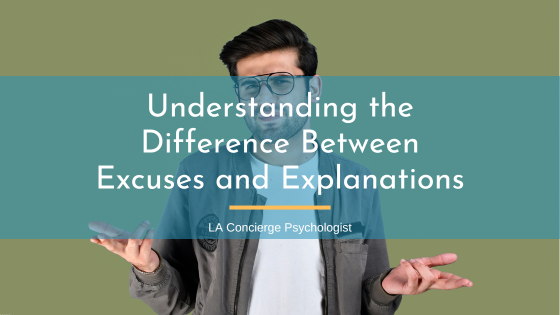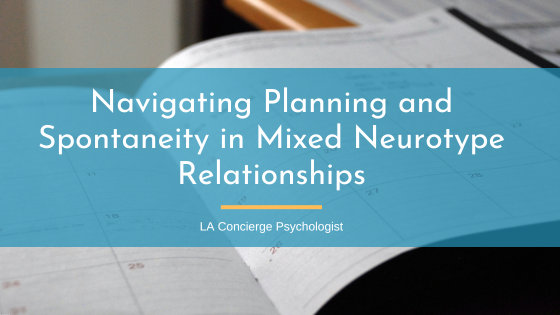We know that our brains process information about the world around us. Some minds naturally organize the world starting with the big picture, while others begin with details and build upward. This cognitive difference, often described as top-down versus bottom-up thinking, represents one of the many ways neurodivergent and neurotypical brains differ in their approach to understanding the world.
For many autistic and AuDHD people, bottom-up thinking isn’t just a preference, it’s how their brains are wired to work. This cognitive style has profound implications for how autistic people learn, work, and navigate social systems that are predominantly designed for top-down thinkers. For autistic individuals who are bottom-up thinkers, the journey may involve additional challenges, but it also brings unique insights and abilities. By understanding and embracing their cognitive style, autistic people can develop strategies to thrive while advocating for environments that recognize and value diverse ways of thinking.
In our experience working with autistic clients, we’ve seen how this fundamental difference shapes their experiences in both challenging and empowering ways. Let’s explore what bottom-up thinking means in the context of autism, how it manifests, and why understanding this difference matters.
Understanding Bottom-Up Thinking
Bottom-up thinking can be described as an inductive approach to processing information. This means that rather than beginning with a broad framework or hypothesis and filling in details later (the top-down approach), bottom-up thinkers start by collecting information, details, and observations[1]. Only after gathering sufficient data do patterns begin to emerge, allowing for the construction of a cohesive understanding or theory. Whereas, top-down thinkers use contextual clues to process information and use previous experiences and expectations to come to conclusion.
In simplest terms:
Bottom-up thinking: “I collect information and details I believe to be related, and then later sort it into a meaningful big picture.” This represents an inductive approach.
Top-down thinking: “I create the big picture first, and then fill in the details as I go.” This represents a deductive approach.
For autistic individuals, bottom-up processing isn’t just a personal preference; it’s a fundamental difference in neural functioning. Research using EEG studies has shown that autistic brains tend to display greater bottom-up signaling compared to top-down channeled flow. This “connectivity imbalance,” as researchers describe it[2], means autistic individuals process sensory information and details before developing overarching frameworks.
The Neurological Basis of Bottom-Up Thinking
The neurological differences that lead to bottom-up thinking in autism are increasingly well-documented. Autistic brains tend toward stronger bottom-up connectivity compared to the top-down channeling that’s common in neurotypical brains. This difference manifests in how information flows through the brain.
In autistic individuals, sensory information and details are processed with heightened significance before being organized into broader concepts. This neurological pattern explains why many autistic people notice details that others miss and why they may need to gather comprehensive information before feeling comfortable with a conclusion.
Bottom-thinking can also contribute to heightened sensory issues in some autistic people, as processing high levels of detail can be overwhelming. This can lead to shutdowns, meltdowns, or even autistic burnout.
Advantages and Challenges of Bottom-Up Thinking
Bottom-up thinking brings unique strengths but also creates challenges in a neuroformative world designed primarily for top-down thinkers.
Strengths of Bottom-Up Thinking
Bottom-up thinkers often excel at identifying complex patterns that may not be immediately obvious to others. Their tendency to gather comprehensive information before drawing conclusions leads to thorough and nuanced analysis. By approaching problems without preconceived frameworks, they frequently discover novel solutions and make unexpected connections between seemingly unrelated concepts.
The natural attunement to details allows bottom-up thinkers to achieve precision in work that requires careful observation. Additionally, their ideas and conclusions are typically well-supported by evidence and observations rather than assumptions, providing strong empirical grounding for their work.
Challenges of Bottom-Up Thinking
Traditional educational systems heavily favor top-down approaches to learning and assessment, creating immediate barriers for bottom-up thinkers. In academic and professional settings, bottom-up thinkers often struggle with the expectation to communicate frameworks and conclusions before they’ve had sufficient time to process all relevant details.
Time constraints pose particular challenges, as bottom-up thinking may require more time to reach conclusions, creating difficulties in fast-paced environments. Perhaps most frustrating is the communication gap that can emerge when explaining a bottom-up thought process to top-down thinkers, often leading to misunderstandings and the perception that the bottom-up thinker is disorganized or inefficient.
Additionally, processing all details before creating a framework requires additional cognitive resources, which can be mentally taxing. Processing the world this way can lead to energetic resources being depleted more quickly than top-down thinkers, causing exhaustion and possible eventual burnout.
Bottom-Up Thinking in Educational Settings
Perhaps nowhere are the challenges of bottom-up thinking more evident than in educational environments. Traditional education systems are overwhelmingly designed for top-down thinkers, creating significant barriers for autistic students who process information differently.
A common assignment of creating an outline before writing a paper may seem straightforward to top-down thinkers, but can be difficult for bottom-up thinkers. How can you outline a paper before you’ve gathered the information that will inform its structure?
An autistic student faced with this task might find themselves in an impossible situation: they cannot produce the outline without first doing the research and mentally composing the paper.
This means they either:
- Do twice the work by researching and composing mentally first, then creating the outline, and finally writing the paper that they’ve already conceptualized.
- Create an artificial outline that doesn’t reflect their actual thinking process, solely to satisfy the assignment requirements.
- Struggle with the assignment and potentially receive lower grades despite understanding the material.
From elementary school writing assignments to doctoral dissertations, this pattern repeats throughout educational systems. The requirement to outline before researching, to hypothesize before observation, and to structure before exploring all creates additional barriers for bottom-up thinkers.
The Invisible Labor of Autistic Professionals
For autistic professionals who are bottom-up thinkers, their cognitive style often results in what might be called “invisible labor”. This is work that is essential to their process but not recognized or valued in traditional metrics of productivity.
This invisible labor extends to many fields. They often perform significantly more work than their top-down thinking colleagues for the same output. This work often remains unpublished, unpaid, and unrecognized, despite its quality and value. Their output of work may appear lower than others, potentially affecting career advancement and recognition in their field.
Bottom-up thinkers often do more work “behind the scenes” than is visible in the final product, creating a disparity in how their contributions are measured and valued.
Mixed Neurotype Communication Struggles
Many autistic people find themselves struggling to communicate with allistic (non-autistic) and neurotypical people because of their bottom-up processing style. When autistic people ask for more information or for clarification to better understand things, their intentions are misperceived. Rather than thinking the autistic person is seeking more information for overall benefit, people believe they’re being “challenging” or “difficult”. Loved ones may think it’s a matter of not trusting them, wondering “why can’t you just trust what I’m saying?”
Neurodivergent-Affirming Therapy: Supporting Bottom-Up Thinking
In our practice as therapists specializing in neurodivergent-affirming care, we see firsthand how traditional therapeutic approaches can be difficult for autistic people with bottom-up thinking styles. Many conventional therapies are designed with neurotypical, top-down processing in mind, creating immediate disconnects for autistic clients.
Neurodivergent-affirming therapy takes a fundamentally different approach by recognizing and honoring the validity of bottom-up thinking. Rather than pathologizing this cognitive style as a deficit to be corrected, affirming therapy embraces it as a natural variation in human cognition with its own strengths and challenges.
How Neurodivergent-Affirming Therapy Helps
- Validation and Understanding: For many autistic clients we’ve worked with, simply having their cognitive style recognized and validated is profoundly healing. Many have spent years being told they’re “overthinking,” “too detail-oriented,” or “missing the forest for the trees.” Affirming therapy helps them understand that their processing style is valid and valuable.
- Cognitive Translation: As therapists who understands both processing styles, we often serve as a “cognitive translator” between bottom-up thinking clients and the top-down thinking world. This includes helping clients understand how neurotypical thinking works and developing strategies to communicate their insights effectively to others.
- Building on Natural Strengths: Rather than forcing autistic individuals to adopt uncomfortable top-down strategies, neurodivergent-affirming therapy builds upon the natural strengths of bottom-up thinking. This might include developing systems for organizing details, using visual tools to identify patterns, or creating personalized frameworks for decision-making that honor their processing style.
- Practical Strategies: Affirming therapy offers concrete tools for navigating specific challenges. For example, we work with clients to develop customized approaches for academic writing, professional presentations, and social interactions that accommodate their bottom-up thinking while meeting external expectations.
- Self-Advocacy Skills: Understanding your own cognitive style is essential for effective self-advocacy. Through therapy, autistic people can develop the language and confidence to request accommodations that support their bottom-up thinking, whether in educational settings, workplaces, or personal relationships.
- Processing Sensory Experiences: Many bottom-up thinkers are also highly sensitive to sensory input. Neurodivergent-affirming therapy helps clients understand how their detailed sensory processing connects to their cognitive style and develop strategies for managing environments that can become overwhelming.
Through our work with autistic clients, we’ve witnessed remarkable transformations when bottom-up thinkers receive support that honors, rather than attempts to change, their cognitive style. Many discover that what they once viewed as deficits are actually unique strengths when properly understood and applied in appropriate contexts.
Navigating a Top-Down World As Autistic People
Developing strategies to navigate a predominantly top-down world is incredibly helpful for autistic people. For example, understanding how you process information can help you advocate for accommodations and develop personal strategies. Acknowledging that certain tasks will take longer due to your processing style allows for better planning and reduces self-criticism when projects do take more time.
Many bottom-up thinkers develop workarounds for tasks that require top-down thinking, like doing research before creating an outline, but presenting it as if the outline came first. This “stealth adaptation” requires additional effort but can be necessary in rigid environments.
Seeking environments that value diverse thinking styles can make a significant difference. Some workplaces and educational settings are beginning to recognize the value of neurodiversity and may offer more flexible approaches to task completion.
Technology can also serve as a bridge; tools like mind mapping software can help visualize the connections between details that bottom-up thinkers naturally perceive, making it easier to communicate these insights to others.
Bottom-Up Thinking as a Strength
While much of this discussion has focused on the challenges of bottom-up thinking in a top-down world, it’s essential to recognize that bottom-up thinking represents a valuable cognitive style with significant strengths.
Bottom-up thinkers often excel at scientific research, where the empirical, observation-first approach aligns well with the scientific method. Their ability to recognize patterns in complex data sets makes them valuable in data analysis and data science. The detailed, systematic approach to problem-solving helps in troubleshooting complex systems and diagnosing issues that might elude those looking only at the big picture.
The natural attention to detail makes bottom-up thinkers excellent at quality assurance, identifying inconsistencies and errors that others miss. By approaching problems without preconceived frameworks, they frequently find creative solutions that wouldn’t emerge from conventional thinking. In fields ranging from software development to academic research, these strengths can translate into significant contributions when properly supported.
Bottom-up thinking represents one of the many cognitive differences that make autistic people unique. Neither better nor worse than top-down thinking, it simply represents a different way of processing and understanding the world. However, in a society predominantly designed for and by top-down thinkers, bottom-up thinkers often face unnecessary barriers and do significantly more work to achieve the same ends.
A Neurodivergent Specialized Therapist Can Help You Work With Your Neurotype
In ourpractice, we’ve seen the transformative power of this understanding. When autistic individuals recognize their bottom-up thinking as a strength rather than a deficit, and when they receive appropriate support and accommodations, they often discover new confidence and capabilities they didn’t know they possessed.
Being neurodivergent doesn’t need to mean that you have to feel alone, limited, or powerless. The world can be yours to engage and contribute to in real and appreciable ways. The coping strategies adopted by autistic adults and ADHDers due to neuronormativity often do not work long-term and can be harmful, but there are safer and healthier ways to get the benefits that avoid emotional and physical risks.
A neurodivergent affirming therapist can help you find effective strategies to navigate work, school, or general life as a bottom-up thinker. If you’re seeking professional support from a therapist who specializes in adult autism, book a free 20 minute consultation with Dr. Barajas or Dr. Smith Han. If you think you might be autistic and want a therapeutically-focused, affirming autism assessment, email Dr. Lee to schedule.



